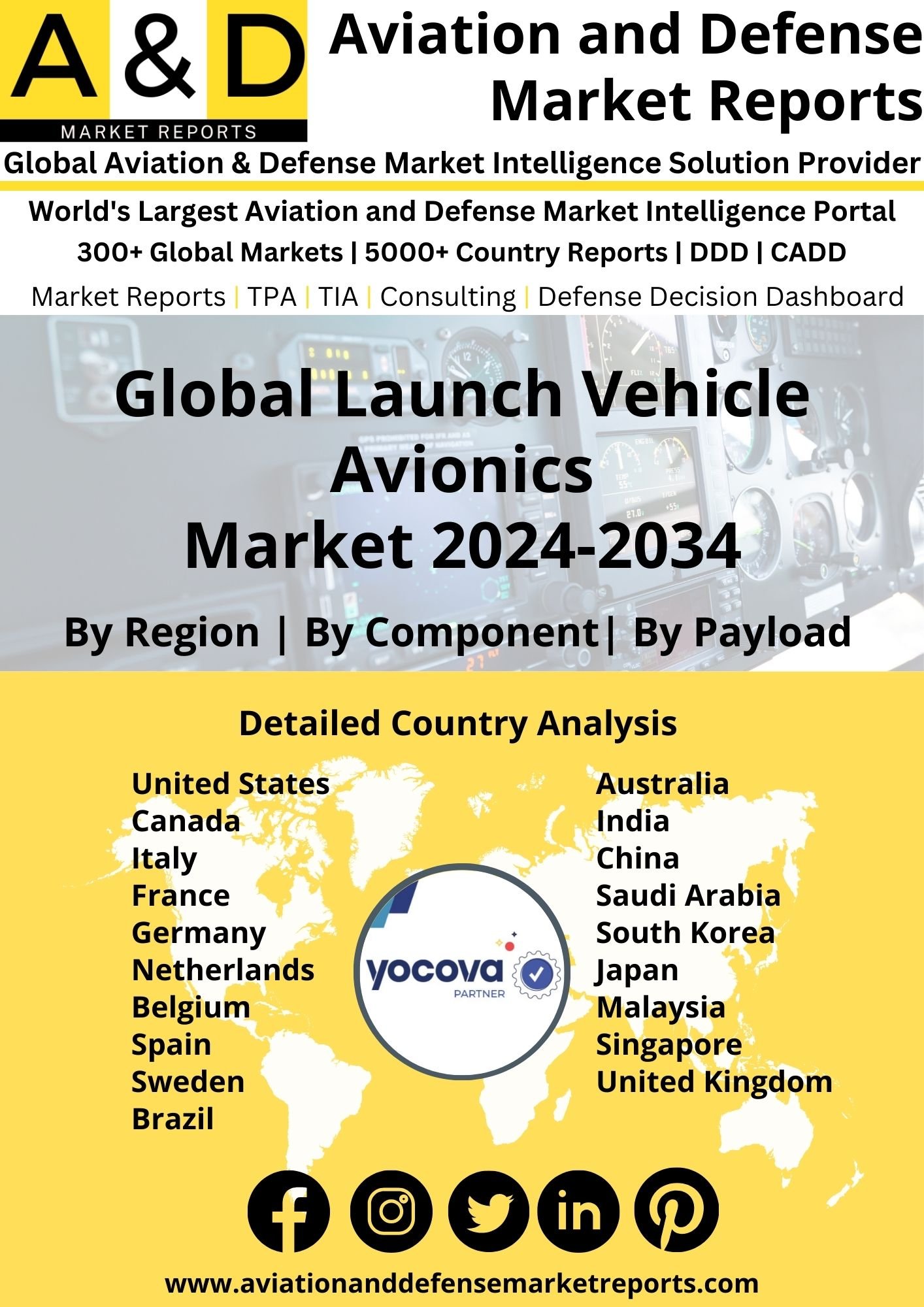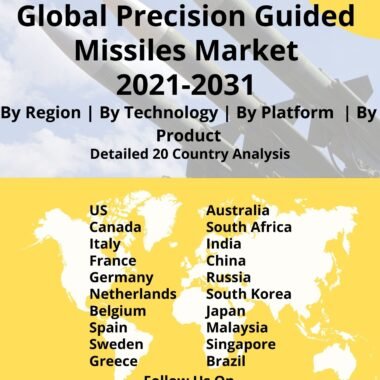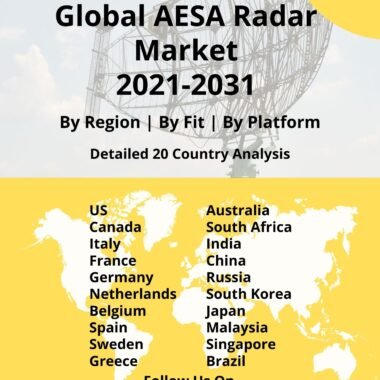Description
Launch Vehicle Avionics Market
Frequently Asked Questions of Global Launch Vehicle Avionics Market
Launch vehicle avionics refers to the electronic systems and components installed on a launch vehicle that are responsible for its guidance, navigation, control, and communication during all phases of the mission. These avionics systems play a crucial role in ensuring the successful launch and delivery of payloads to their intended orbits.
Flight computers serve as the central processing units of the avionics system, performing computations, executing control algorithms, and coordinating data exchange between different subsystems. They handle real-time tasks, such as sensor data processing, trajectory calculations, and actuator control. GNC systems are responsible for determining the launch vehicle’s position, velocity, and attitude, and for controlling its trajectory. They typically consist of sensors, such as accelerometers, gyroscopes, and GPS receivers, which provide inputs for navigation algorithms. The GNC system calculates optimal commands for vehicle control, including thrust vector control and steering, to ensure precise trajectory and mission objectives. Launch vehicles generate vast amounts of data during a mission, including vehicle health status, sensor measurements, and telemetry data. Telemetry systems collect, process, and transmit this data to the ground control center, enabling real-time monitoring and analysis of the launch vehicle’s performance.
Launch vehicles generate vast amounts of data during a mission, including vehicle health status, sexnsor measurements, and telemetry data. Telemetry systems collect, process, and transmit this data to the ground control center, enabling real-time monitoring and analysis of the launch vehicle’s performance. Launch vehicle avionics require a reliable and efficient power supply. Power distribution and management systems handle the distribution of electrical power to various subsystems, ensuring that each component receives the appropriate voltage and current. These systems often incorporate redundant power sources, voltage regulation, and fault protection mechanisms. Avionics systems incorporate a variety of sensors to collect data on launch vehicle performance and environmental conditions. These sensors include accelerometers, gyroscopes, altimeters, pressure sensors, temperature sensors, and attitude determination sensors. The data from these sensors is used for real-time control, monitoring, and safety evaluations. Avionics software includes embedded software and algorithms that control the launch vehicle’s operations, perform data processing tasks, and execute guidance and control functions. Software development involves rigorous testing, verification, and validation to ensure its reliability and robustness. Avionics systems must be seamlessly integrated with other subsystems of the launch vehicle, such as propulsion, structures, and payload systems. Interface standards and protocols are established to enable data exchange and interoperability between avionics and other components.
Major factors driving Launch Vehicle Avionics Market Growth
The growing number of space launch activities, both government and commercial, is creating a demand for advanced avionics systems. With the emergence of private space companies and increasing investments in space exploration, there is a need for reliable and high-performance avionics to support launch operations.
Space agencies and launch service providers are investing in the modernization of launch vehicles to enhance their capabilities, reliability, and cost-effectiveness. Avionics systems play a critical role in modernization efforts by incorporating advanced technologies, such as digital systems, miniaturized components, and improved data processing capabilities.
Trends influencing the Launch-Vehicle Avionics Market Size
Radar and RF detection are the most often used technologies for drone detection. In a range of circumstances, including urban and noisy locations, radar and RF detection can be utilized to enhance airspace security. A multi-layered system that offers users improved coverage and protection can be created using RF and radar in conjunction.
Launch-Vehicle Avionics Market Forecast & Dynamics
Counter-drone technology is already in use in a variety of military and commercial applications. C-UAS systems are used by the US military for base protection in other countries. The use of portable and mobile systems to protect ground units and convoys is also gaining popularity. Counter drone technology is already in use in civilian settings in a variety of ways. Airports, stadiums, jails, enterprises, and large events such as the Super Bowl have all deployed C-UAS for airspace protection in the United States.
The deployment of drone countermeasures such as signal jammers is restricted in the United States to federal agencies such as the US Department of Defense, Department of Homeland Security, and Department of Justice. In the United States, drone detection countermeasures such as RF and radar are authorized. Because drone detection is allowed, it is a more viable and practical security solution. Drone detection is already being used in several contexts in the United States to improve airspace security and reduce drone hazards.
Launch Vehicle Avionics Market Analysis for Recent Developments
According to the company’s statement, Ananth Technologies has been the first private sector business to completely carry out the Launch Vehicle Integration and Checkout for the mission – PSLV-C55/TeLEOS-2 – and for the fifth time in ISRO’s history, beginning with the PSLV-C51 launch. Ananth Technologies’ Thiruvananthapuram unit completed the 9 Avionics sub-assemblies of various flight systems and stages, including electrical harnessing, integration, checkout, environmental testing, and transportation to Satish Dhawan Space Centre (SDSC). Ananth Technologies’ TVPM unit designed and built many the mission’s important avionics packages, including onboard computers (NGC), stage processing systems, control electronics, telemetry, and power systems. Ananth Technologies has produced around 22 of these units for the PSLV-C55 mission.
In February 2022, SDA awarded Northrop Grumman Strategic Space Systems a potentially $700 million prototype contract to research and construct 42 Tranche 1 Transport Layer (T1TL) satellite space vehicles for launch in 2024. SDA also awarded T1TL space vehicle contracts to Lockheed Martin and York Space Systems. Northrop will receive S-band software-defined radios for Telemetry, Tracking, and Control (TT&C) data links from Innoflight, as well as Type-1 “bulk” and “mesh network” End Cryptographic Units (ECUs), network Internet Protocol (IP) routers with Multi-Protocol Label Switching (MPLS), network Ethernet switches, flight processors with on-orbit data storage, and precision navigation timing.
The global landscape of launch vehicle avionics has witnessed significant advancements, contributing to more efficient, reliable, and sophisticated space launch capabilities. Avionics, encompassing the electronic systems and instruments crucial for space vehicle control and navigation, have seen notable developments across various aspects. Navigation and guidance systems have become more precise, leveraging advanced sensors, inertial measurement units, and sophisticated algorithms. These improvements enhance the accuracy of launch vehicle trajectories, optimizing payload delivery to desired orbits.
Communication systems on launch vehicles have evolved to support higher data rates and more reliable links between the rocket and ground control. This ensures real-time monitoring and facilitates efficient decision-making during critical phases of the launch. The integration of artificial intelligence and machine learning technologies in avionics contributes to autonomous decision-making and anomaly detection, enhancing the overall reliability and safety of launch missions. Miniaturization of avionic components, increased radiation resistance, and improved fault tolerance have collectively enhanced the resilience of launch vehicle avionics in the challenging space environment. Global cooperation and standardization efforts in avionics technology continue to streamline the interoperability of launch vehicles, facilitating collaboration between different space agencies and commercial entities. These advancements collectively underscore the ongoing commitment to advancing space exploration and satellite deployment capabilities in 2023.





